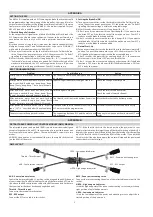Dudek Paragliders Optic 2 Light earth, User Manual
The Dudek Paragliders Optic 2 Light earth is a cutting-edge paragliding wing designed for enthusiasts seeking the ultimate flying experience. To guide you through its optimal usage, a comprehensive User Manual is available for free download at manualshive.com. Discover the product's outstanding features and unleash your soaring potential with confidence.
















